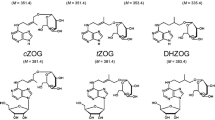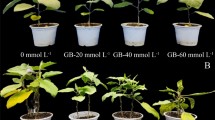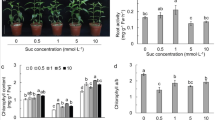Abstract
IT is generally believed that energy-rich phosphate compounds act as a store-house of energy for different reactions during growth. The auxin-induced stimulation of respiration is presumed to be due to an increased availability of phosphate acceptors due to the rapid utilization of nucleotides during the growth process1–3. Rhodes and Ashworth4 have speculated on the mechanism by which growth substances may be metabolized for the generation of energy-rich phosphate bonds, but an unequivocal demonstration of the stimulation of nucleotide synthesis is not available. Ormrod and Williams5 and Key et al.6 have recently observed increased phosphorylating activities in plants sprayed with 2,4-dichlorophenoxyacetic acid. Marre and Forti7 had noted a rapid increase in high-energy phosphate level in auxin-treated pea internode segments during the first 30 min., followed by a decline. The method of estimation of adenosine triphosphate (ATP) adopted by them, which involves the adsorption of adenine nucleotides on charcoal followed by elution with hydrochloric acid, has several limitations when applied to tissue sections. Since numerous metabolic reactions go on in the cell at the same time, and a large number of them concern the participation of nucleotides, particularly reactions mediated by the kinase type of enzyme, and the phosphate residues are transferred to a variety of substrates, estimation of the level of adenine nucleotides at any given time is not the true measure of the total ATP formed during the experimental period. A more correct approach is to estimate the phosphate esterified to organic compounds including the nucleotides. Phosphate labelled with phosphorus-32 may be conveniently used for this purpose and the present communication summarizes the findings of an investigation directed towards this objective.
This is a preview of subscription content, access via your institution
Access options
Subscribe to this journal
Receive 51 print issues and online access
$199.00 per year
only $3.90 per issue
Buy this article
- Purchase on Springer Link
- Instant access to full article PDF
Prices may be subject to local taxes which are calculated during checkout
Similar content being viewed by others
References
Bonner, J., Plant Biochemistry (Acad. Press Inc., New York, 1959).
Bonner, J., and Bandurski, P. S., Ann. Rev. Plant Physiol., 3, 59 (1952).
French, B. C., and Beevers, B., Amer. J. Bot., 40, 660 (1953).
Rhodes, A., and Ashworth, B. de B., Nature, 169, 76 (1952).
Ormrod, D. P., and Williams, W. A., Plant Physiol., 35, 81 (1960).
Key, J. L., Hauson, J. B., and Bils, R. F., Plant Physiol., 35, 177 (1960).
Marre, E., and Forti, G., Physiol. Plantarum, 11, 36 (1958).
Author information
Authors and Affiliations
Rights and permissions
About this article
Cite this article
SEN GUPTA, A., SEN, S. Effect of Indole-3-Acetic Acid (IAA) on Phosphorus Metabolism in the Avena Coleoptile. Nature 192, 1291–1292 (1961). https://doi.org/10.1038/1921291a0
Issue Date:
DOI: https://doi.org/10.1038/1921291a0
This article is cited by
Comments
By submitting a comment you agree to abide by our Terms and Community Guidelines. If you find something abusive or that does not comply with our terms or guidelines please flag it as inappropriate.



